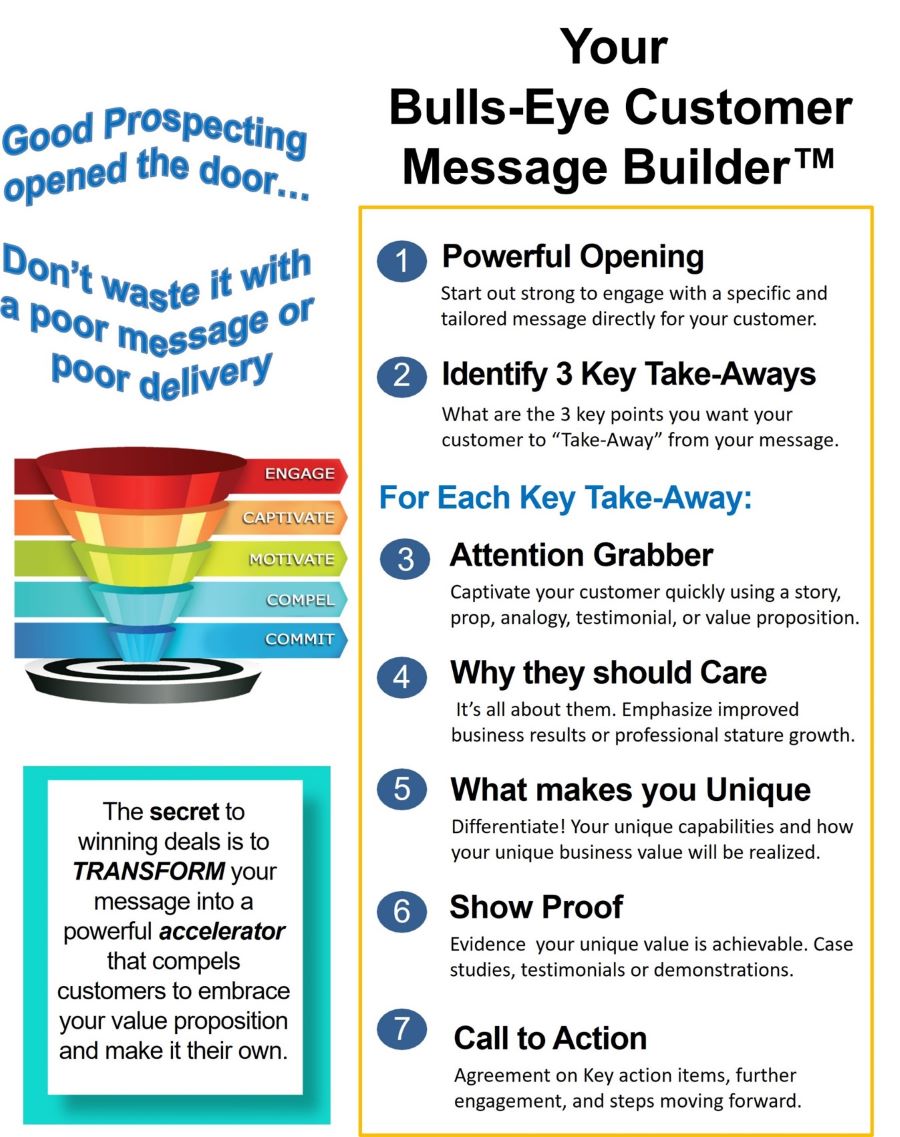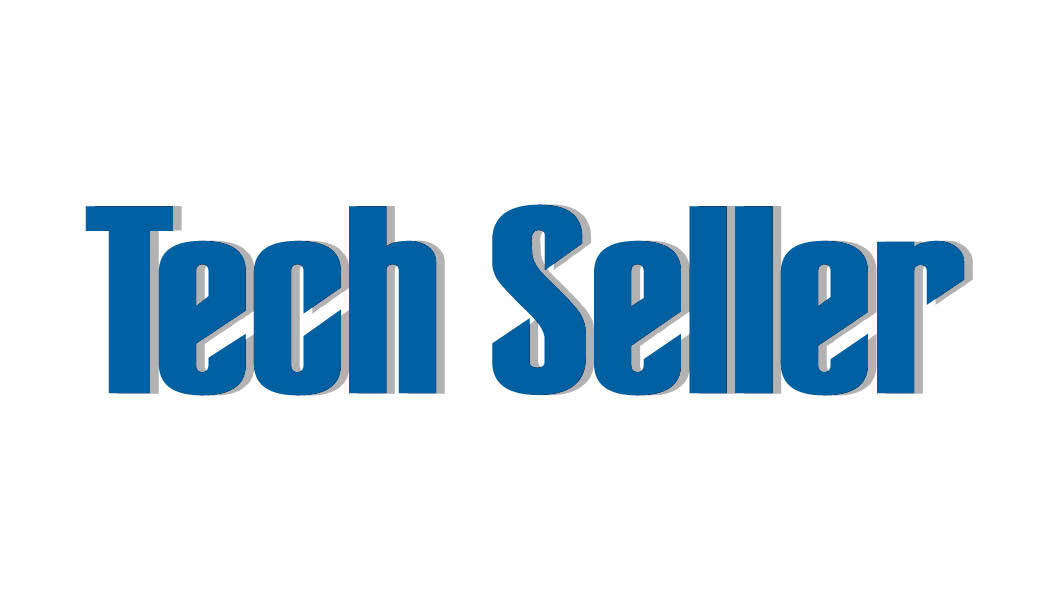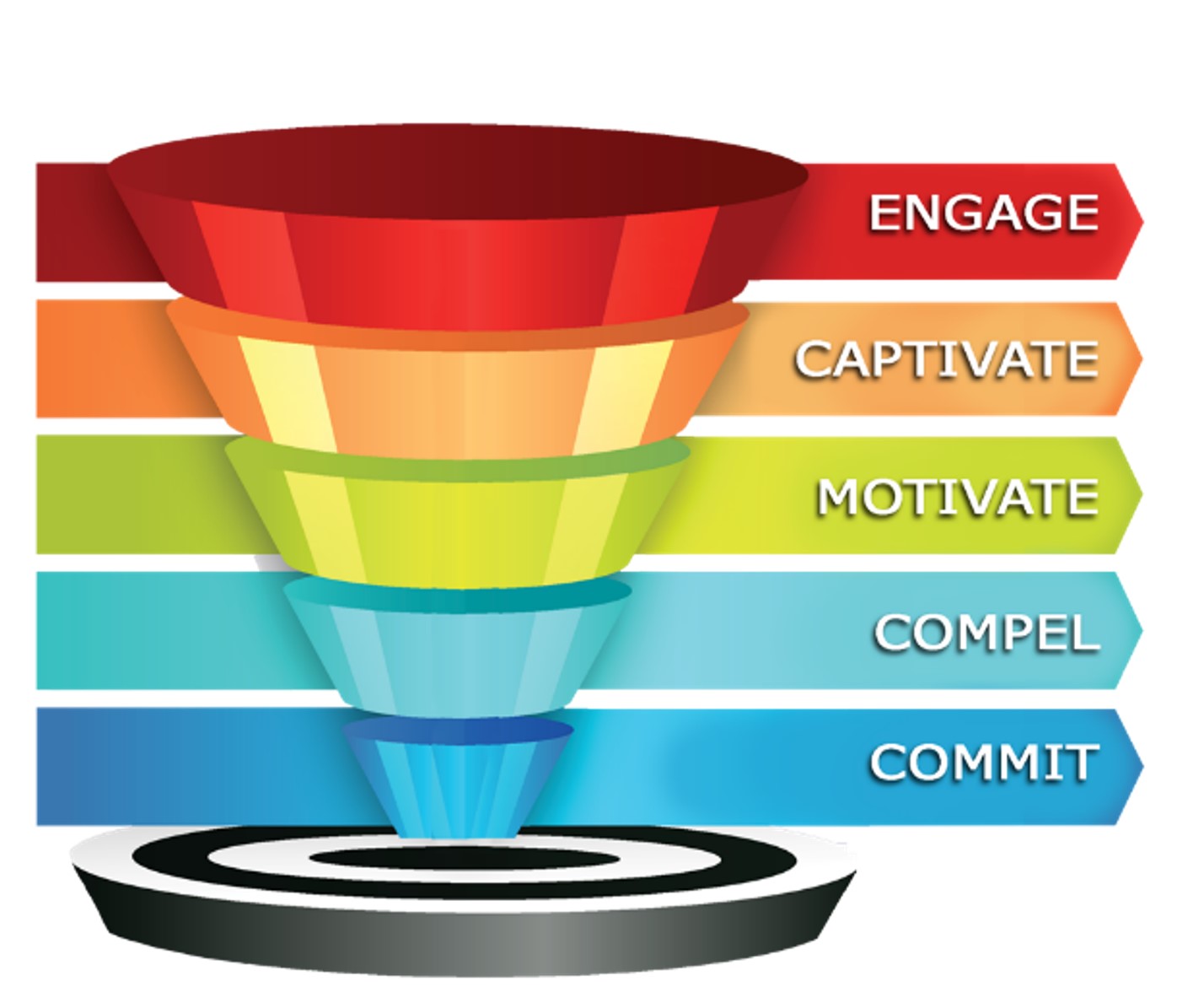This template lays out the process you will use to create and deliver your on-target customer message that captivates your customer and compels them to action every time.

This template lays out the process you will use to create and deliver your on-target customer message that captivates your customer and compels them to action every time.
Too often sales professionals will not take the time to properly prepare a well-crafted message. Instead, they will quickly sift through old presentation slide decks that were previously used or were developed by colleagues to see what they can borrow. Such an approach is completely backwards and usually results in a bloated, off-target message. Taking time to build your customer message using this bulls-eye approach will enable you to focus on addressing your customer’s specific needs and deliver an on-target message.
1. Powerful Opening
Your audience will evaluate your worth, your message, and your value within the first 30 seconds of your meeting. You have one chance—one opportunity to captivate them. Don’t waste it. Once you have garnered their interest, be sure you don’t turn around and immediately lose it with a boring opener. The most important thing is what you do or say right at the beginning, so forget the warmup. Instead of spending ten minutes talking about the agenda and an additional ten minutes having each attendee give an individual introduction, jump right in and show the best thing first.
That’s right. It’s simple. Show the best thing first. This technique is probably the most important grabber you can use. Try this in the first 30 seconds of the meeting, before you even introduce yourself. Apply this concept to any type of customer interaction, whether you are meeting face-to-face, conducting a web conference or phone conference call, or sending an email. Show the best thing first
2. Identify 3 Key Take-Aways
Build your message around the three main points you want your audience to remember. These three main points are your “Take-Aways.” In other words, what do you want your audience to “take away” from your communication? Take-Aways are the key points that are compelling to your audience, that differentiate your solution, and that emphasize your solution’s unique value.
Introduce these Take-Aways by describing the overall benefit to your customer and linking them to the unique value provided by your solution.
Then, for Each Key Take-Away:
3. Attention Grabbers
A “grabber” is a technique you can use to instantly seize your audience’s attention. Interject grabbers at the beginning of your conversations to immediately capture your audience’s interest and emphasize key points. Once they are focused on what is most important, place grabbers strategically throughout your communication to highlight specific differentiators and make them memorable.
An effective grabber highlights why your audience should care and what’s in it for them. A grabber can be a story, an analogy, a prop, a value proposition, or a testimonial.
We are constantly bombarded with stimulus from the internet, the 24/7 news cycle, email, and social media. We suffer from information overload. A grabber, like a good story helps cut through this noise and amplify your point. People remember good stories.
4. Why they should Care
Reinforce your grabber by emphasizing what’s in it for the customer—how your Take-away will improve the customer’s business results or professional stature. Show your value proposition by working out the numbers in terms of benefits realized. Remember, it’s all about them, not about you.
5. What makes you Unique
Connect your differentiators to the Take-Away. Be sure you are focusing on the unique capabilities your company or your solution delivers. Brainstorm ideas on what are your top differentiators and how you are unique. Articulate those items with confidence. If you do not differentiate, you may be selling for your competition.
6. Show Proof
Provide evidence to back up your claims that substantiates your unique value. Tie your unique differentiators to a customer testimonial or a demonstration. Your customer will need to ensure that what you are telling them is accurate and achievable.
7. Call to Action
Recommend action items for follow-up to further engage with your customer and define the steps for moving forward. Before you reach the end of your meeting, come to a mutual agreement on these steps and focus on those that will help you advance your sales cycle.

